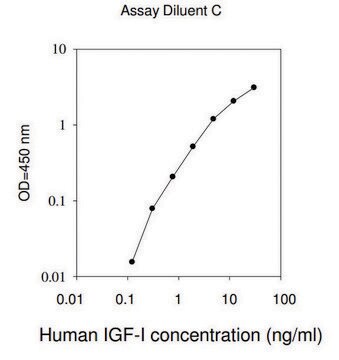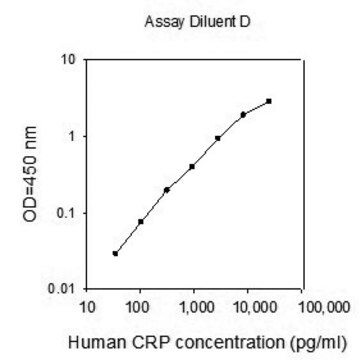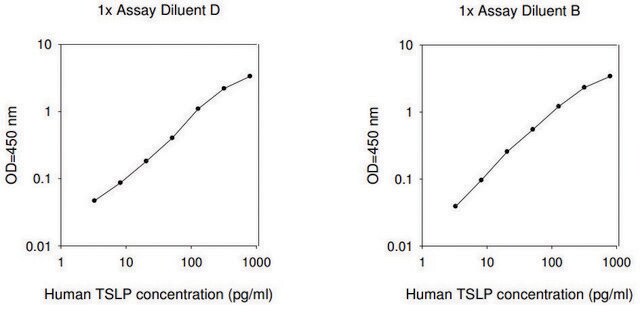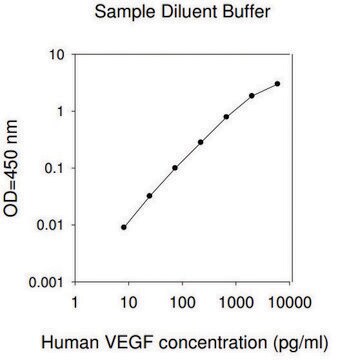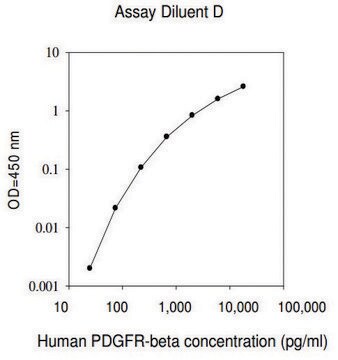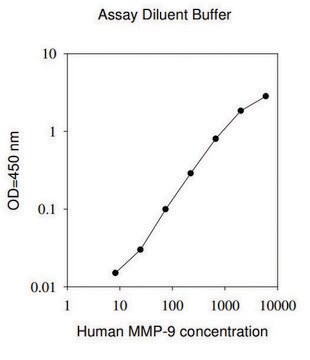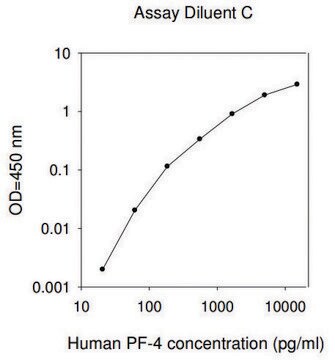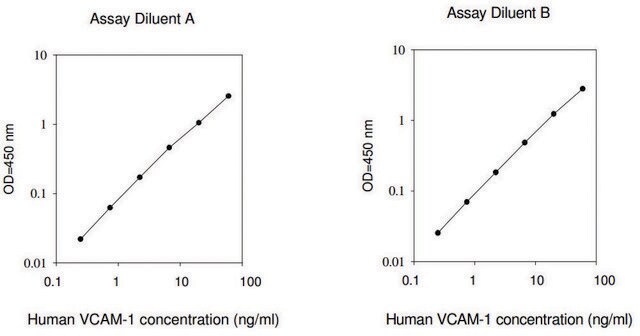Recommended Products
species reactivity
human
packaging
kit of 96 wells (12 strips x 8 wells)
technique(s)
ELISA: suitable
input
sample type cell culture supernatant(s)
sample type serum
sample type plasma
assay range
inter-assay cv: <12%
intra-assay cv: <10%
sensitivity: 14 pg/mL
standard curve range: 16.38-4000 pg/mL
detection method
colorimetric
shipped in
wet ice
storage temp.
−20°C
Gene Information
human ... SDC1(6382)
General description
The antibody pair provided in this kit recognize human Syndecan-1/CD138.
Application
For research use only. Not for use in diagnostic procedures.
Please refer to the attached General ELISA KIT Procedure (sandwich, competitive & Indirect ELISA)
Please refer to the attached General ELISA KIT Procedure (sandwich, competitive & Indirect ELISA)
Other Notes
A sample Certificate of Analysis is available for this product.
Please type the word sample in the text box provided for lot number.
Please type the word sample in the text box provided for lot number.
Signal Word
Warning
Hazard Statements
Precautionary Statements
Hazard Classifications
Met. Corr. 1
Storage Class Code
8A - Combustible corrosive hazardous materials
Flash Point(F)
Not applicable
Flash Point(C)
Not applicable
Choose from one of the most recent versions:
Already Own This Product?
Find documentation for the products that you have recently purchased in the Document Library.
Lawrence N Diebel et al.
The journal of trauma and acute care surgery, 84(4), 575-582 (2017-12-30)
Early resuscitation after trauma-hemorrhagic shock with plasma rather than crystalloid may ameliorate systemic endothelial cell (EC) injury and dysfunction (endotheliopathy of trauma). We postulated that endothelial-lined microfluidic networks would be a useful platform to study the EC activation/injury under flow
Mark E Diebel et al.
The journal of trauma and acute care surgery, 84(1), 75-80 (2017-10-19)
The endothelial glycocalyx (GCX) plays an important role in vascular barrier function. Damage to the GCX occurs due to a variety of causes including hypoxia, ischemia-reperfusion, stress-related sympathoadrenal activation, and inflammation. Tranexamic acid (TXA) may prevent GCX degradation. The therapeutic
Jonathan V Martin et al.
American journal of surgery, 214(6), 1166-1172 (2017-10-05)
Geriatric trauma patients have high circulating norepinephrine (NE) levels but attenuated release of epinephrine (Epi) in response to increasing severity of injury. We hypothesized that NE and Epi have different effects on the endothelial and glycocalyx components of the vascular
Josephine Koch et al.
American journal of physiology. Renal physiology, 316(1), F121-F127 (2018-11-01)
Syndecan-1, a transmembrane heparan sulfate proteoglycan, associates with renal and cardiovascular functioning. We earlier reported syndecan-1 to be involved in renal tubular regeneration. We now examined plasma values of syndecan-1 in a hemodialysis cohort and its association with volume and
Kohji Uzawa et al.
Journal of anesthesia, 34(1), 36-46 (2019-10-17)
Fluid therapy focused on glycocalyx (GCX) protection in hemorrhagic shock is a current focus of research. Hydroxyethyl starch (HES) solution is commonly used for fluid resuscitation; however, its effects on the GCX remain unclear. The primary aim of this study
Our team of scientists has experience in all areas of research including Life Science, Material Science, Chemical Synthesis, Chromatography, Analytical and many others.
Contact Technical Service